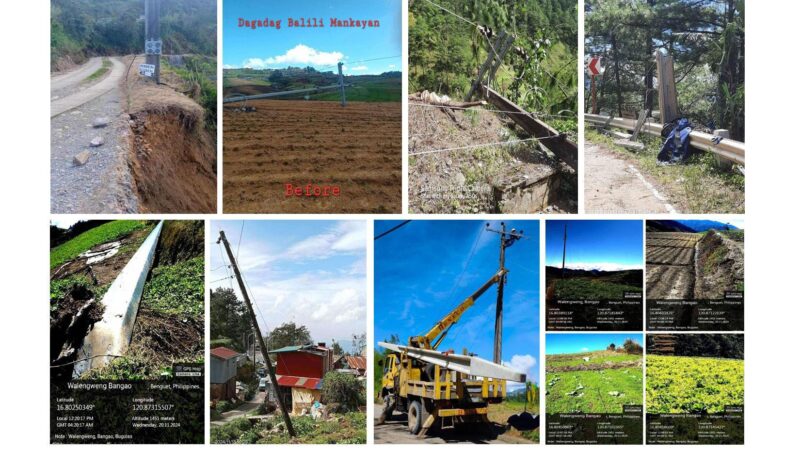EcoWaste Coalition Deplores Chinese Paint Imports with High Lead Content in Violation of the Country’s Lead Paint Ban

22 September 2024, Quezon City. Imported paints with high lead content continue to enter the domestic market in blatant violation of the country’s ban on lead-containing paints, which was promulgated to prevent children’s and workers’ exposure to paints containing lead additives.
The toxics watchdog group EcoWaste Coalition again highlighted this deplorable situation after finding five variants of a “made in China” paint brand contaminated with lead exceeding the regulatory limit of 90 parts per million (ppm) as per the DENR-issued Chemical Control Order (CCO) for lead and its compounds.
During the test buys it conducted recently, the group obtained seven colors of Top Standard Spray Paint for P89 to P99 each from the branch of a popular chain store in Pulilan, Bulacan Province. Although it is marked “made in China,” no information was given on who the product’s manufacturer and distributor were.
All seven paints were manufactured on May 3, 2024 (way past the country’s phase-out deadline for lead-containing paints) and will expire on May 2, 2027 as written on the bottom of the cans. In line with the said CCO, leaded decorative paints were phased out from 2013 to 2016, while leaded industrial paints were phased out from 2013 to 2019.
The maker of Top Standard Spray Paint touts it as “technically advanced formulations” for interior and exterior application on a variety of surfaces and articles, including household furniture, appliances, bicycle, helmet and motor equipment as shown on the label.
While it contains information on how to use the product and some general health and safety precautions to be observed, aided with hazard words and symbols, the label provided no indication about the product’s lead content to inform and warn consumers. There was no warning about the dangers of lead exposure, particularly for vulnerable sectors like women, children and workers.
After spraying the paint on a wood lath and after it has completely dried, the group screened each sample for lead using a point-and-shoot X-Ray Fluorescence (XRF) analyzer, which can detect and measure lead on the paint.
Based on the XRF screening results, the yellow, green and orange colors of Top Standard Spray Paint contain 43,060 ppm, 31,530 ppm and 23,000 ppm of lead, respectively. The bright and scarlet red colors contain traces of lead between 92 to 101 ppm. Lead was not detected on the gold and purple colors.
“While paint makers belonging to the Philippine Paint & Coatings Association, Inc. have embraced non-lead paint production in compliance with the law, paints with high lead content continue to get dumped into our ports which we lament and deplore,” said Manny Calonzo, Campaigner, EcoWaste Coalition. “To curb this preventable source of lead exposure, the authorities need to strengthen compliance monitoring, including adopting new measures, to ensure that leaded paints are no longer sold and used in the country.”
“The continued sale of imported lead-containing paints put young children at risk of lead poisoning. Until such time when trade of lead paints and lead chromates, the main lead-based ingredient in paint, is controlled, more children will get exposed to this neurotoxin,” said Jeiel Guarino, Global Lead Paint Elimination Campaigner, International Pollutants Elimination Network (IPEN).
IPEN and its members in the Global South, including the EcoWaste Coalition, are pushing for government-led action that will list lead chromates as hazardous chemicals in the Rotterdam Convention, which will then subject these lead compounds and the paints containing them under the treaty’s Prior Informed Consent (PIC) procedure.
If listed in the said treaty, companies exporting lead chromates or paints containing them may not ship these commodities to a country that has not consented to receiving them. Also, countries can use the PIC rules to restrict or prevent the entry of lead chromates and paints that contain them.
According to the EcoWaste Coalition, the listing of lead chromates in the Rotterdam Convention will contribute towards the effective enforcement of the CCO banning lead in the manufacture of paints and other similar surface coatings, and for the prevention and reduction of human exposure to lead, which is considered a non-threshold toxicant among children, stressing “there is no level of exposure to lead that is known to be without harmful effects.” (PR)
Reference:
https://lawphil.net/statutes/repacts/ra1992/ra_7394_1992.html
https://chemical.emb.gov.ph/wp-content/uploads/2017/03/DAO-2013-24-CCO-Lead.pdf
https://ipen.org/site/listing-lead-chromates-under-rotterdam-convention
https://www.who.int/news-room/fact-sheets/detail/lead-poisoning-and-health







